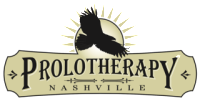What problems does PRP effectively treat?
PRP and other Prolotherapy solutions can be used essentially interchangeably to treat conditions characterized by ligament and tendon damage, cartilage loss, and bony changes (often termed ‘osteoarthritis’). Any condition, and any structure, that can be treated by Prolotherapy can also be effectively treated using PRP. (See ‘What Can Prolotherapy Treat)
**JOINT PAIN: It can be used for joint pains where no imaging abnormality (like ‘bone on bone’) is noted, and it can be used for people with severe changes on imaging studies (bone on bone, etc.).
**NECK AND LOW BACK PAIN: It can also be used to treat spinal ligament damage that often leads, in addition to back or neck pain, to disc degeneration and bony changes. Often epidural steroid injection, radio-frequency nerve ablation, and spinal fusion are recommended by Orthopedic and Spine surgeons for such problems.
**SPORTS INJURIES: It can be used to treat sports injuries of all types. It has been used successfully to treat many sports- related conditions for which Orthopedic surgeons recommend surgery, such as rotator cuff tears, labrum and meniscus tears, tendon damage (such as could undergo Tommy John surgery). It can be very effective for almost any ongoing pain noted during activity in feet, ankles, knees, hips, backs, shoulders, elbows, wrists, hands and thumbs, and necks. This would include things diagnosed in any area or structure as arthritis, sprain, strain, or tear. This would include sprains, strains, and tears of muscles, as well as ligaments and tendons. One very exciting aspect of PRP treatment of athletes is seeing them be able to resume full activity in a much shorter time than would be possible with any other treatment strategy. This is particularly true with professional athletes ‘in season’. Treatment under Dr. Johnson’s care has gotten several professionals ‘back on the field’ in such a way when treatment, even with PRP, by the ‘team doctor’ was not producing the desired ‘rapid’ results. This difference in results largely stems from the tendency of the Orthopedic physicians to target their treatment using imaging studies only. In other words, they only treat what they ‘see’ on films as damaged. Dr. Johnson uses a different targeting strategy for treatment that identifies all of the damaged, symptom-causing structures, including the ones that do not ‘show up’ on films, but which are producing pain and functional limitation.
**AUTOMOBILE ACCIDENTS, FALLS, AND OTHER ACCIDENTS AND INJURIES: Pain following any trauma, whether anything is ‘seen’ on imaging studies or not, is generally due to unhealed connective tissue damage. This damage, as in the typical ‘whiplash’ injury, often does not ‘show up’ on imaging studies, and may remain undiagnosed, or may be misdiagnosed as a ‘nerve pinch’, a ‘bulging disc’, or as some kind of inflammation. The key to successful treatment in this group of people is to diagnose the source of the pain accurately and completely. In almost all people, all of the pain is emanating from unhealed damage in connective tissue structures. Although such damage does not ‘show up’ on imaging studies, it is very easy to accurately locate on physical examination. When correctly diagnosed, such problems respond in a very high percentage of people to repeating the healing cycle several times using either PRP or other Prolotherapy solutions.
CHRONIC PAIN: Many patients who present to Dr. Johnson’s office have significant pain that has been undiagnosed, or mis-diagnosed. Current diagnostic approaches, based upon emphasizing imaging studies, and not understanding the role that unhealed connective tissue damage may be playing, and not being trained how to diagnose such damage, often leads to patients being accused of having some character issue as the underlying cause of their ‘problem’, or of having an improper motive for seeking medical care. Or their ‘ condition’ has been assigned a cause, like a bulging disc, bone spur, or other entity ‘seen’ on an imaging study, or ‘inferred’, like scar tissue or nerve pinches or inflammation, that has not ‘responded’ to treatments based upon such ‘diagnoses’. If tenderness can be found in connective tissue structures that correlates to the patient’s location of symptoms, then these chronic painful conditions will respond with a very high degree of success to PRP administration, or to other Prolotherapy solutions, regardless of previous diagnoses. The one exception is in the case of an auto- immune disorder, like rheumatoid arthritis, that has been documented by laboratory testing, not simply assumed to be present by a Rheumatologist despite the fact that the tests are ‘normal’. In patients with chronic pain, including patients diagnosed as having ‘Fibromyalgia’, PRP, and traditional Prolotherapy, provides a high percentage of success, particularly when combined with diagnosis and treatment of the underlying problem with ‘maintenance connective tissue healing’ that caused the problem in the first place (Read More on Prolotherapy and Connective Tissue Damage Syndrome).
